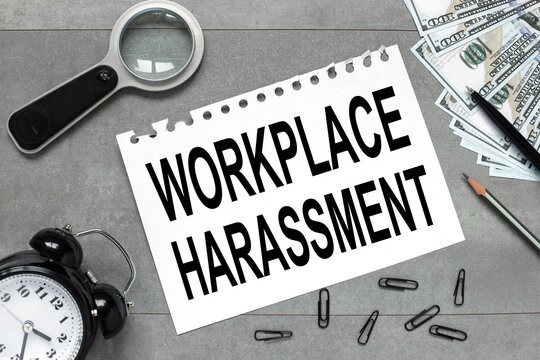An Anti-Harassment Policy is crucial in today's business landscape to foster a safe and inclusive work environment. This policy not only fulfills legal obligations but also upholds ethical standards by promoting respect among employees. By clearly defining harassment and establishing consequences for such behavior, organizations prioritize the well-being of their workforce. In this article, we explore the importance of an Anti-Harassment Policy, its essential components, and the positive impact it can have on employee morale, productivity, and overall organizational success.
What is Anti-Harassment Policy?

An anti-harassment policy is a set of guidelines and procedures that aim to prevent and address harassment within an organization. It establishes clear expectations of behavior for employees, contractors, and visitors, promoting a safe and inclusive work environment.
Harassment, as defined by an anti-harassment policy, encompasses unwelcome verbal or physical conduct that creates an intimidating or offensive atmosphere. It may involve actions or comments related to protected characteristics such as race, gender, sexual orientation, religion, or disability.
Types of Harassment
Common Types of Harassment in the Workplace
Harassment in the workplace can manifest in various forms, causing distress and creating a hostile environment for employees. It is crucial to recognize and understand the common types of harassment that can occur. Here are some examples:
Sexual Harassment
Sexual harassment involves unwelcome sexual advances, requests for sexual favors, or any other verbal, non-verbal, or physical conduct of a sexual nature. It can include inappropriate comments, gestures, jokes, explicit emails or messages, unwanted touching, or displaying sexually explicit material.
Verbal Harassment
Verbal harassment includes derogatory or offensive comments, slurs, insults, or belittling remarks targeting an individual's race, gender, religion, age, or other protected characteristics. It can create a hostile and uncomfortable work environment for the targeted employee.
Physical Harassment
Physical harassment involves unwelcome physical contact, such as pushing, hitting, grabbing, or any form of physical intimidation or aggression. Physical harassment violates personal boundaries, causes harm, and instills fear or discomfort in the victim.
Bullying
Bullying is a form of harassment characterized by repetitive, aggressive behavior that aims to intimidate, undermine, or degrade an individual. It can include spreading rumors, mocking, isolating, or excessively criticizing someone, which can have a severe impact on their well-being and job performance.
Discriminatory Harassment
Discriminatory harassment occurs when an individual is targeted based on their race, gender, age, religion, disability, sexual orientation, or other protected characteristics. It can involve actions or comments that create a hostile environment or hinder the person's opportunities and advancement within the organization.
Cyber Harassment
With the rise of technology, cyber harassment has become increasingly prevalent. It involves using digital platforms to harass, intimidate, or threaten individuals. This can include sending abusive emails or messages, spreading false rumors online, or engaging in cyberbullying through social media platforms.
Psychological or Emotional Harassment
Psychological or emotional harassment refers to actions or behaviors that inflict emotional distress, humiliation, or intimidation. It can include constant criticism, insults, shouting, isolation, or withholding information, leading to significant psychological harm to the targeted individual.
Read more: Why Employee Recognition Matters?
Importance of Having an Anti-Harassment Policy

Having a well-defined and effectively implemented anti-harassment policy is crucial for several reasons.
Firstly, it sends a clear message to employees that harassment will not be tolerated, creating a sense of safety and trust within the organization. This, in turn, improves employee morale and reduces the risk of turnover.
Secondly, an anti-harassment policy protects the organization from legal liabilities by demonstrating a commitment to preventing and addressing harassment. Additionally, it promotes a positive company image, attracting top talent and establishing credibility with clients and partners.
Key Elements of an Effective Anti-Harassment Policy

Clear Definition of Harassment
The policy should provide a comprehensive definition of harassment, encompassing various forms such as verbal, physical, written, visual, and online. This definition should explicitly state that harassment based on protected characteristics, as defined by applicable laws, is strictly prohibited.
Statement of Prohibited Conduct
The policy should outline the specific behaviors and actions that are prohibited within the organization. This includes providing examples of conduct that constitute harassment, ensuring employees have a clear understanding of what is unacceptable in the workplace.
Reporting Mechanisms
The policy should establish clear and accessible reporting mechanisms for employees to report incidents of harassment. This can include designating specific individuals, such as supervisors, managers, or members of the Human Resources department, who can receive and address harassment complaints. The policy should encourage prompt reporting and provide multiple avenues for reporting to accommodate different preferences and circumstances.
Investigation and Resolution Procedures
The policy should outline the procedures that will be followed when a harassment complaint is received. It should include information on how the organization will conduct a prompt, fair, and thorough investigation, ensuring confidentiality to the extent possible. The policy should also address the appropriate steps for resolving substantiated complaints, including disciplinary measures for perpetrators.
Confidentiality and Non-Retaliation
The policy should emphasize the importance of maintaining confidentiality throughout the investigation process and assure employees that they will be protected from retaliation for reporting harassment. It should clearly state that any form of retaliation against individuals who report harassment or participate in an investigation is strictly prohibited.
Training and Education
The policy should highlight the organization's commitment to providing regular training and education on harassment prevention and awareness. This can include interactive workshops, online courses, or other educational resources to ensure that all employees, including managers and supervisors, understand their roles and responsibilities in preventing and addressing harassment.
Consequences of Violating the Policy
The policy should clearly outline the potential consequences for individuals found to have violated the anti-harassment policy. This can include disciplinary actions ranging from verbal warnings and retraining to suspension or termination of employment, depending on the severity and frequency of the misconduct.
Regular Policy Review and Updates
The policy should specify that it will be periodically reviewed and updated to ensure its effectiveness and compliance with any changes in laws or regulations. This demonstrates the organization's commitment to continuously improving its approach to preventing and addressing harassment.
Explore more: Managing a multigenerational workforce
Sample Workplace Harassment Policy
Policy Statement
[Your Company Name] is committed to providing a work environment that is free from harassment. We believe that every employee has the right to work in an atmosphere that promotes dignity, respect, and fairness. This policy outlines our commitment to preventing and addressing all forms of harassment, including but not limited to, those based on race, color, religion, sex, national origin, age, disability, or any other protected characteristic under applicable law.
Prohibited Conduct
Harassment, in any form, is strictly prohibited within our organization. This includes, but is not limited to:
- Verbal harassment, such as derogatory comments, slurs, or offensive jokes.
- Physical harassment, such as unwelcome physical contact or gestures.
- Visual harassment, such as displaying offensive or sexually suggestive material.
- Written harassment, such as offensive emails, letters, or notes.
- Online harassment, including cyberbullying, posting inappropriate content, or engaging in any form of online intimidation.
- Sexual harassment, which includes unwelcome sexual advances, requests for sexual favors, or any other conduct of a sexual nature that creates an uncomfortable or hostile work environment.
Reporting Procedure
We encourage employees who experience or witness harassment to promptly report it to their immediate supervisor, manager, or any designated individual identified in our reporting procedure. Employees can report harassment verbally or in writing, ensuring that they provide sufficient details about the incident(s) to aid in the investigation.
If an employee is uncomfortable reporting the harassment to their supervisor, they are encouraged to report it to the Human Resources department or another designated representative. All reports will be handled with sensitivity, discretion, and confidentiality to the extent possible.
Investigation and Resolution
Upon receiving a harassment complaint, [Your Company Name] will initiate a prompt and thorough investigation. The investigation will be conducted in a fair and impartial manner, respecting the privacy and rights of all parties involved. We will take appropriate corrective actions to address substantiated instances of harassment, which may include disciplinary measures up to and including termination of employment.
Non-Retaliation
Retaliation against any individual who reports harassment or participates in an investigation is strictly prohibited. [Company Name] is committed to protecting employees from retaliation and will take appropriate measures to prevent and address any acts of retaliation.
Training and Education
To foster a culture of respect and prevent harassment, [Company Name] will provide regular training sessions to all employees. These training programs will focus on recognizing, preventing, and addressing harassment in the workplace. All employees, including managers and supervisors, will receive the necessary resources and education to ensure a thorough understanding of our harassment policy.
Policy Review
[Your Company Name] is committed to periodically reviewing and updating this policy to ensure its effectiveness and compliance with any changes in laws or regulations. We encourage employees to familiarize themselves with the policy and its updates as they occur.
Conclusion
At [Your Company Name], we believe that maintaining a work environment free from harassment is essential to the success of our organization. We are dedicated to fostering a culture of respect, dignity, and inclusivity. Our commitment to preventing and addressing harassment extends to all employees, and we will take swift and appropriate action to address any violations of this policy.
If you have any questions or concerns regarding this policy, please contact the Human Resources department or your immediate supervisor.
Wrap Up
In conclusion, having an Anti-Harassment Policy is vital for organizations to promote a safe and inclusive workplace. This policy establishes clear guidelines, identifies unacceptable behaviors, and outlines procedures for reporting and addressing harassment incidents.
By prioritizing employee well-being and fostering a culture of respect, organizations can mitigate the risks associated with harassment, protect their employees, and cultivate a positive work environment. Regularly reviewing and updating the Anti-Harassment Policy ensures its effectiveness and compliance with evolving laws and best practices.
For more insightful articles on HR topics, we encourage you to explore additional posts on HR in Tanca blog. If you're interested in learning more about HR software solutions that facilitate policy implementation and support employee well-being, please feel free to reach out to us.
If you are new to HR, take a look at the beginners guide to human resources.









